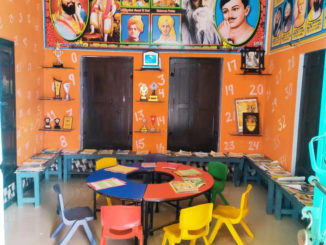
One of the four celebrated religious centers of India, Puri, the abode of Lord Jagannath needs noPuri Beach introduction. According to tradition Puri was once a thickly wooded hill inhabited by the Sabaras (Pre-Aryan and Pre-Dravidian tribes of the Austric linguistic family). The sunny beach at Puri is one of the finest in the world. Watching the sunrise in a symphony of colours is a wonderful experience. It is one of the most popular sea-side resorts where visitors from any part of the globe can comfortably relax.
Places of interest
The Temple of Lord Jagannath built during the 12th century A.D. by Chodaganga Deva dominates the landscape for kilometers around. Being the tallest temple (65 metres) in Orissa, it is one of the most magnificent pieces of monuments of India. In front of the main gate stands a 16 sided monolithic pillar (11 metres high), called Aruna Stambha which formally stood in front of the Sun Temple and was brought to Puri during the 18th century A.D. Some of the other important temples are Gundicha, Lokanath, Sunaragauranga, Daria Mahabir and Tota Gopinatt. There are also a number of holy tanks like Narendra, Markandeya, Sweta Ganga and Indradyumna. There are many Monasteries locally known as Mathas also of touristic interest.
Balighai
The Casuarina fringed Balighai beach is a famous picnic spot. The Sun and fun at the mouth of the river Nuanai is unforgettable.
Brahmagiri
Brahmagiri is known for the living shrine of Alarnath. Streams of pilgrims visit Alarnath during Anabasara of Lord Jagannath. Nearby is the shrine of Baliharachandi on the solitary sand dunes.
Satyabadi
Satyabadi or Sakshigopal is known for the shrine of Lord Sakshigopal. It is believed that the visit to Puri is incomplete without a visit to Sakshigopal. The temple is only 2 km away from the main road leading to Puri and is convenient to visit.
Baliharachandi
27 km to the south-west of Puri is the temple of Baliharachandi. Situated on a sandy hill near the sea and adjacent to the mouth of the river Bhargavi, Goddess Durga is worshipped here as Baliharachandi. The scenic beauty of this place is ideal for group picnic.
Raghurajpur
One of the most famous artists village in Orissa, the village of Raghurajpur boasts not only of the exquisite pattachitra’s and talapattachitra’s, but also of being the native place of Guru kelucharan Mohapatra, the famed Odissi dancer. Even today, under the tutelage of renowned Guru’s, young boys can be seen practicing the Gotipua dance here. A visit to Orissa would definitely be incomplete without a visit to this little village.
Satapara
Satapara, a retreat in nature on Chilika Lake, has been thrown open to visitors. Its location near the confluence of the Lake with the Bay of Bengal, and proximity to Puri (52 km), makes it an ideal spot to enjoy Chilika. The thrilling sight of dolphins round the year and abundance of migratory and resident birds in winter make it a preferred place for a vacation with nature.
Jagannath Temple
Belonging to the 11th century and enjoying the honor of being one of the ‘char dhams’, the pilgrimage that every Hindu intend to visit; Jagannath Temple is the honor of Puri and Odisha (Orissa). The holy sight of Lord Jagannath, accompanied by Subhadra and Balabhadra raises loads of joy among the devotees. The two gods and the goddess of the temple are ornamented in accordance with the occasion and seasonal change.
The structural design of the temple can be found to be in pyramid shape. You would be excited to know that the Jagannath Temple of Puri has a latent legend associated with it. It is believed that in the Krita Yuga, the actual image of the lord had the power of granting ‘moksha’ to anyone who witnessed it. Yamaraja didn’t find this justice. So, he decided to keep the image in some distant and unknown corner of the earth.
However, as Dvapar Yuga arrived, the idol that is worshipped today in Jagannath Puri was constructed by Lord Vishnu with the help of wooden logs. And it doesn’t make difference in the Lord’s power in spite of having the hands lacking. Jagannath Temple in Odisha (Orissa) consists of four entrance gates.
They are named as Singhadwara, Ashwadwara, Hathidwara and Vyaghradwara and these names refer to lion, horse, elephant and tiger. Each day, the Lord at the Jagannath Temple is offered ‘bhoga’ six times and it is dispensed among the worshippers close to Ratnavedi.
Legend of Jagannath Temple
According to the legend, Indrayumna, the king of Malava in Sata Yuga, was a great devotee of Vishnu. Once the king dreamt of Nilamadhava Vishnu and was curious to know where that particular form of the Lord was worshipped. Therefore, he sent his emissaries in four directions to find this.
Brahmin Vidyapati was sent to the east. He came to Utkala and entered Savara village where he took shelter in the house of the Savara King Visvavasu. Lalita, king’s daughter, fell in love with Vidyapati and the latter got married to her to extract information about Nilamadhava. Visvavasu used to go to the forest every morning to worship Nilamadhava installed in Niakandara (Blue cave).
Vidyapati thus coaxed his wife to request her father to allow him to see Nilamadhava. Visvavasu agreed on the condition that Vidyapati will be taken to the shrine and brought back from there with a blindfold. On hearing this, Vidyapati went to his wife and asked her to make such an arrangement that he may subsequently know the path. Lalita gave him some sesame seeds to be scattered on the side of the road he followed so that he might know the path when sesame plants grew up during the rains.
Accordingly, Vidyapati was taken to Nilakandara where he saw Nilamadhava. Later, when Vasu Savara offered food to the deity, he did not take it as usual to the king’s dismay. At this, a divine voice was heard. It said, “we would no longer continue to be worshipped by you. Oh! Vasu, we will change the present Nilamadhava form and assume Daru form. We shall be worshipped in the temple by Raja Indradyumna”.
The king came back from the blue cave with a very heavy heart losing his deity. Vidyapati too bade farewell to his wife and father-in-law and started for Malava. Having heard the story, King Indradyumna started with his retinue for Utkal to see Nilamadhava. On reaching Nilakandara, he found it vacant. But a voice from the air told him to construct a temple on Nilasaila (Blue Mountain). Hearing this, the king ordered the construction to begin. On completion of the temple, the king went to Brahmaloka to invite Brahma to consecrate the temple.
But, Brahma being in meditation, he had to wait for nine Yugas. The temple thus got buried in sand in his absence. In the mean time, a new dynasty came to rule at Utkala. Galamadhva, a king of that dynasty, detected the buried temple. He was considering installing images in the temple when Indradyumna with Lord Brahma appeared before him. Both the kings had a tussle over the ownership of the temple.
However, Lord Brahma decided in favor of Indradyumna and asked him to install deities in the temple. Now, the king was at a loss as to where to find the deities from. Therefore, god told him in his dream that he would be floating in the sea in the form of a log of wood. Then Sage Narada assured Indradyumna that Vishnu would appear to him in the temple form of three wooden images. When a big tree, radiant with light was seen floating in the sea, Narada told the king to make three idols out of it and place them in a pavilion.
Indradyumna got Visvakarma, the architect of Gods, to build a magnificent temple to house the idols and Vishnu himself appeared in the guise of a carpenter to make the idols on condition that he was to be left undisturbed until he finished the work. But just after two weeks, the Queen became very anxious. She took the carpenter to be dead as no sound came from the temple. Therefore, she requested the king to open the door.
Thus, they went to see Vishnu at work at which the latter abandoned his work leaving the idols unfinished. But a divine voice told Indradyumana to install them in the temple. The three idols represent the god Jagannath, his elder brother, Balabhadra and their sister, Subhadra. The wooden idols being worshipped are renewed during special occasions. This wooden idol prepared from a log of wood floating on the ocean finds a mention in the Rig Veda, where it is referred to as Purushottama.





Be the first to comment